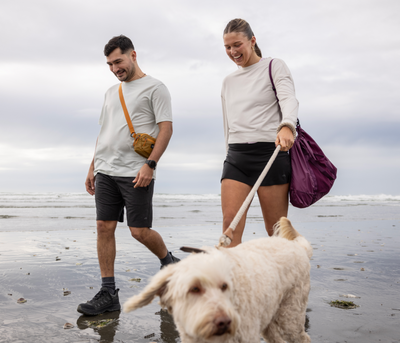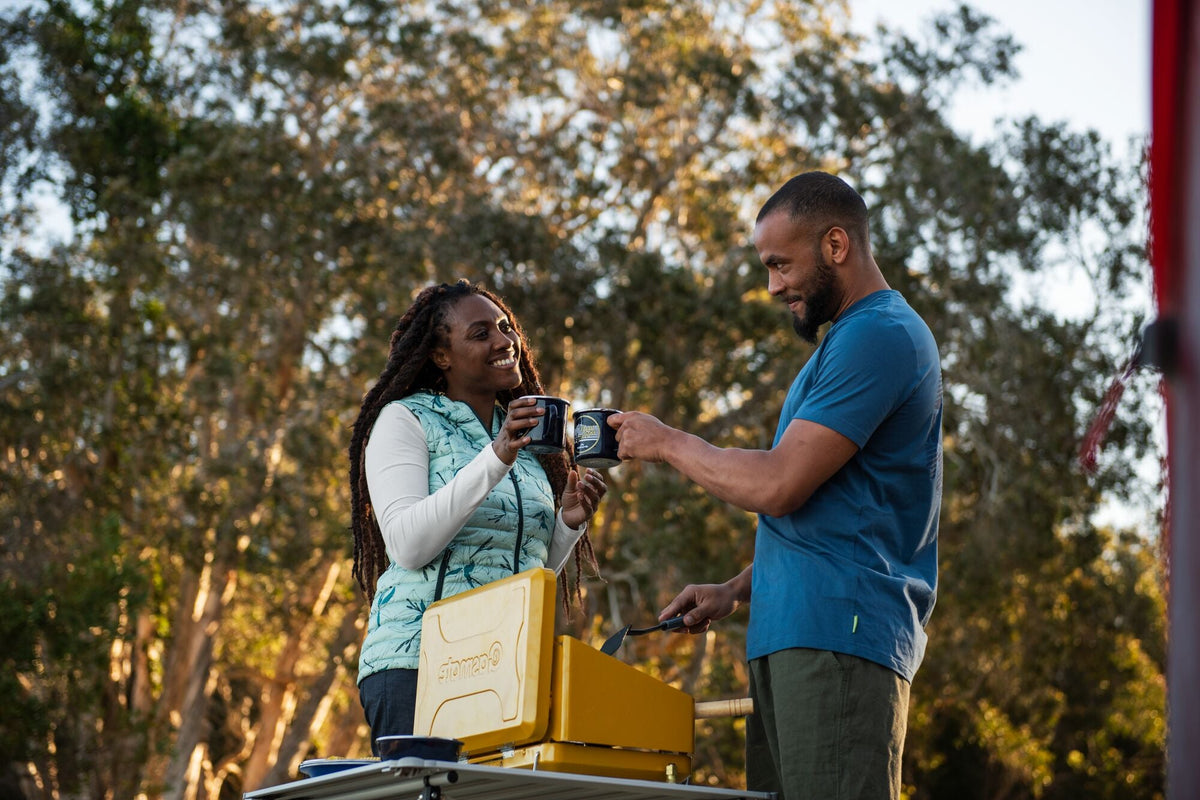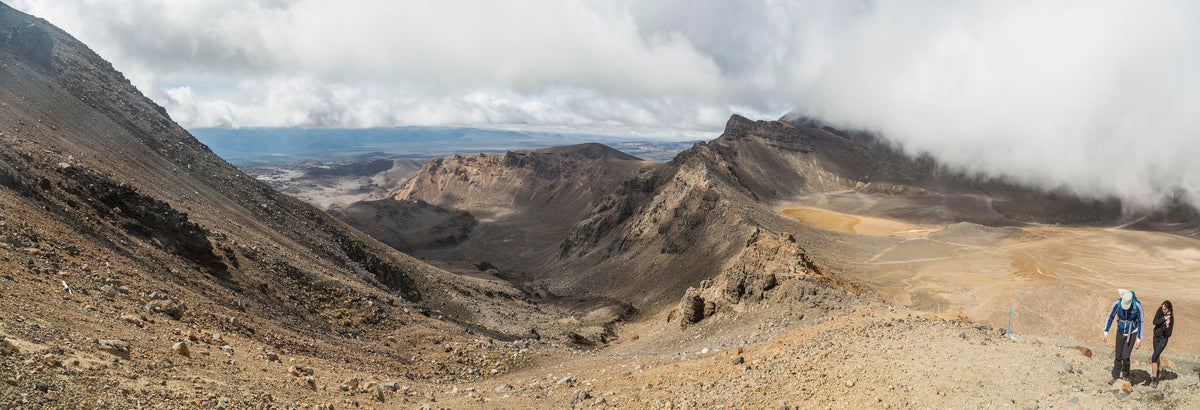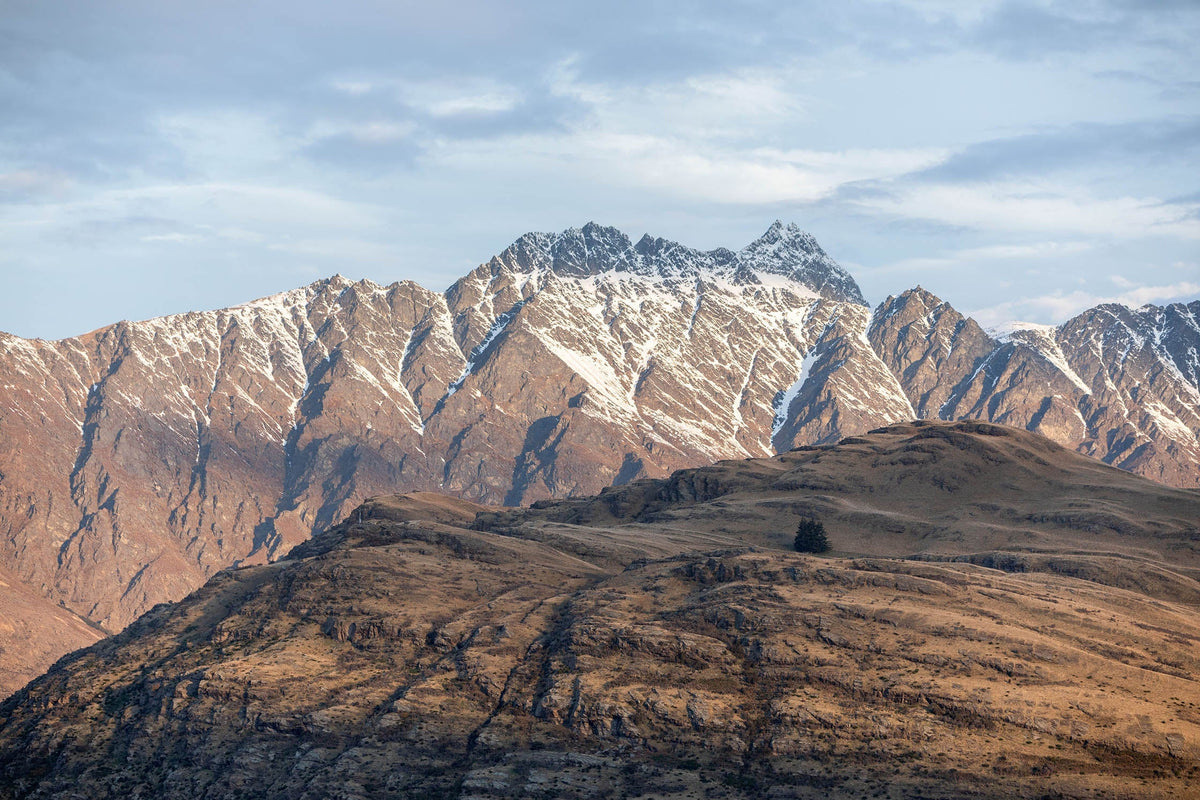After a tough day of lugging a heavy backpack up a hill, one of life's greatest pleasures is feasting on a high-fat, high-sugar, and high-carb meal. When you're out there, it can be tempting to #treatyourself to all the forbidden fruits. Unfortunately, experience has shown that our body needs a balanced diet when we're going for endurance. We've put together a guide for how you can sustain your energy throughout a multi-day hike - without suffering from a sugar-high comedown, battling upset bowels, or developing scurvy.
Rule #1: Ease is key
We all have grandiose ideas about our capacity for effort, and overestimate how much chutzpah we'll have on the trail. But the reality is when your muscles ache, and you're sweating profusely, the last thing you want is any resistance between you and food.
Here's how you can avoid getting hangry, and make life easier out on the trail:
- Attack the snacks. Ensure your snacks are easily accessible, so that you can munch while moving.
- A quick, ready-to-eat lunch scores double points. You don't want to spend your whole lunch break chopping, assembling and cleaning up the mess once you've inhaled that sandwich.
- Cheating is encouraged. The best meals are the ones you've already made, or better yet, someone else has made. What do we mean by that? Cook extra dinner at home, and take the leftovers with you. Or if you know there's an amazing bakery on the way to the trail, then support a local business, and stock up on all the goodies!
- Make the most of your kitchen, before you leave. Remember you're not going to have the luxury of a drawer full of utensils, or a dishwasher out in the backcountry. Any chopping, premixing or transport-friendly tasks you can do at home, will really help out your future self.
- The fewer dishes, the better. A one-pot meal means less stress, water, and time required. The ultimate winners in this department are dehydrated meals. They don't require cleaning any dishes, since you eat them straight out of the pouch, and the pot you boiled water in is already clean.
- Ask yourself: "How will I carry the rubbish?" The last thing you want is an open tuna packet leaking into your bag. Anything with resealable packaging gets our tick of approval. In the lead-up to your trip, we recommend holding onto and repurposing any zip lock bags that your food comes in. Top tip: tortilla bags make excellent sealable rubbish bags. Otherwise, a trusty clippable Tupperware container or a screwable plastic peanut butter jar are great ways of transporting leftovers and/or waste.
Rule #2: Variety is the spice of life
Part of the magic of hiking is the simplicity of only having the items that you can carry on your back. However, it can be difficult to anticipate what exactly you'll crave when you're in the pain cave. Our tastes when we're exerting energy are very different from when we're passively snacking at our desks. Regardless of the length of your trip, balance is essential - so make sure you have a mix of sweet and salty, fresh and preserved, energy-dense, and nutrient-dense snacking options. Plus, not having too much of one thing will mean you're less likely to fall victim to digestive issues.
Our favourite snacks
- Fresh produce, such as apples, mandarins, carrots and cucumbers already come ready to eat, and have the nutrients that your body will thank you for in the long term. Be sure to store these at the top of your pack, or in a dedicated snack pocket that won't get crushed.
- Nuts, nuts, and more nuts. There's a reason every trail mix includes these superstars - they have an unparalleled calorie-to-weight ratio. A little certainly goes a long way. Plus, they can be dressed up to be any flavour you like: sweet, salty, or even spicy!
- Dried fruit is perfect for long trips, as you don't have to worry about them getting bruised or going off. Whoever brings dried mango will be the most popular person in the group - just sayin'.
- Savoury premixes (Bhuja) - the salty, spicy goodness can't be beaten.
- Energy bars - it's all in the name!
- The humble peanut butter and jam sandwich - cheap, cheerful and carbo-loaded.
- Pre-dinner snacks. This is its own special category for when you arrive at camp, and you're counting down the minutes until dinner. Never underestimate the joy that just-add-water soup or instant noodles will provide after a day of hard work.
Rule #3: Quantity is everything
Now the hard part. How can you get variety, without carrying the whole grocery store on your back? The answer is to make a list. It can be words on a piece of paper or physical items laid out in front of you - it's up to you how you want to visualise it.
Our packing strategy
- The first step is to establish how many meals you will be hiking for, and what the bare minimum amount of food and water you will need. This depends on how long you're going, how difficult the terrain is, and whether there'll be any water refill opportunities along the way. Add on an extra meal as a contingency, in case you're out there longer than expected. Take into account that you will probably require larger portion sizes over time, as your body won't be used to exercising so intensely over multiple days.
- If you're scared of going hungry, throw in some dehydrated mash potato, powdered soup or some instant noodles for good measure. They weigh almost nothing to carry, but will fill you up when cooked.
- Decide what your priorities are in terms of weight, energy, cost, time, and taste. This matrix can vary meal to meal - you may prefer to have a cheap and quick breakfast, to allow for a more expensive, time-consuming-yet-tasty dinner. For example, the most popular breakfast food is porridge. It is lightweight, cheap, and quick to make (just add water!), however, some think it underperforms in the taste category, and it isn't the most nutrient-dense. You can add some pizzaz to porridge with some fruit or flavourings, but this pizzaz adds extra cost, weight and time to prepare. Meanwhile, a packet of premix risotto may seem like a cheap, tasty, easy, and lightweight option, however, the cooking time is upwards of 30 minutes - which uses a lot of fuel.
- Don't forget to factor in how much fuel and water each meal requires. Enough said.
- The final and scariest moment is whether everything fits in your backpack. If there isn't enough room, then it's time to compromise. Sometimes that means swapping an elaborate three-course dinner for a just-add-water dinner-in-a-pouch, or saying goodbye to a beloved beverage for one night. It's a sacrifice we've all had to make.
Now what?
Even the most seasoned hiker worries about what food to take - so make sure you take it easy on yourself and remember hiking is meant to be fun! There's no one-size fits all approach, and every decision you make comes with a compromise. BUT this trial-and-error is all part of the charm, and with time you will develop your own preferences. It's yet another reason why hiking is better with friends - you can eat their food, too.
But if you're really stuck, we've broken down some of our favourite dinner recipes(/blog/best-hiking-dinner-recipes), and we've included a four-day meal plan below. Happy hiking!
Day 1
- Breakfast: Eaten at home before leaving.
- Lunch: Leftovers from dinner, or a takeaway sandwich from a bakery.
- Snacks: Fresh apple, carrots, cheese, and crackers.
- Dinner: Cashew nut stir fry. Click here for the recipe.(/blog/best-hiking-dinner-recipes)
- Dessert: A bar of chocolate.
Day 2
- Breakfast: Oats, vanilla protein/milk powder, peanut butter, cacao, and fresh mashed banana.
- Lunch: Tuna and crackers.
- Snacks: Nut mix, bhuja mix, dried fruit mix.
- Dinner: Pesto pasta with salami. Click here for the recipe.(/blog/best-hiking-dinner-recipes)
- Dessert: Powdered hot chocolate sachet.
Day 3
- Breakfast: Oats, vanilla protein/milk powder, freeze-dried raspberries, shredded coconut, and dried apple.
- Lunch: Salami and cheese wraps.
- Snacks: Nut mix, bhuja mix, dried fruit mix.
- Dinner: Miso soup. Click here for the recipe.(/blog/best-hiking-dinner-recipes)
- Dessert: Powdered chai latte sachet.
Day 4
- Breakfast: Oats, vanilla protein/milk powder, cranberries, and granola.
- Lunch: Tuna wraps and an energy bar.
- Snacks: Everything leftover.
- Dinner: Takeaways on the drive home.
- Dessert: Anything! You deserve it.













